Playlist: O'Dark 30 episode 183 (4-27)
Compiled By: KUT

KUT's O’Dark 30 features the very best from the world of independent radio that we can find here on PRX and elsewhere. Sunday nights at 10 on Austin's KUT 90.5 we present 3 hours of a bit of everything from the big wide world of independent radio production. Episode 183 (4-27) includes Episode 13: Documenting Immigrants from Decode DC...#49 - Balance and the Minnesota Marriage Amendment from HowSound...Portrait of an Educator: M. Scott Tatum...Tim O' Brien on war stories: "There's something that endures."...The Things They Carry: Captain Jason Pace...from KUT Delta State with Spike Gillespie...99% Invisible #76- The Modern Moloch (Director's Cut)...The Mikie Show #47, Kara...Bonjour... Show full description
Episode 13: Documenting Immigrants
From Decode DC | Part of the DecodeDC series | 31:04
DecodeDC collects the stories of those most often left out of the immigration debate: actual immigrants.
- Playing
- Episode 13: Documenting Immigrants
- From
- Decode DC
 DecodeDC collects the stories of those most often left out of the immigration debate: actual immigrants.
DecodeDC collects the stories of those most often left out of the immigration debate: actual immigrants.
#49 - Balance and the Minnesota Marriage Amendment
From HowSound | 24:42
Reporter Sasha Aslanian on balanced reporting during Minnesota's gay marriage debate.

"Take that bumper sticker off your car," I was firmly told by a reporter friend many years ago. "It's fine to have opinions. Just keep them to yourself."
I remember replying: "Just because I do some reporting, doesn't mean I have to give up my right to free speech. I'm still a citizen, ya know." He shrugged.
Years later, I now offer his advice to students and others. My thinking has changed. I'm still a citizen. I still have opinions. But, when I show up to report a story, interviewees should believe I'm going to give them a fair shake. No bumper sticker (or button or t-shirt or statement or....) should cause them to think otherwise.
But, keeping a bumper sticker off a car is easy. What about fairness in the reporting itself? How does a reporter make sure the story they tell is balanced? Sasha Aslanian has some good answers.
Sasha is a reporter for Minnesota Public Radio (and producer of a great documentary Divorced Kid .) Over the last couple of years, Sasha has reported extensively on the contentious issue of gay marriage in Minnesota. Balance was front and center for her while reporting that story.
On this HowSound, Sasha talks how she worked to achieve balance -- from choices she made in the field, to writing, to voicing. We'll also listen to a story she produced about how the gay marriage debate played out in Hibbing, Minnesota.
In addition to listening to this addition of HowSound, please read Sasha's excellent speech (posted below) about balance and reporting on Minnesota's gay marriage amendment. She delivered it to the "Best of the Midwest" conference sponsored Associated Collegiate Press in February of 2013. This might be my favorite quote from he speech:
"Here’s the thing. You are an anthropologist. You are dropped into two warring villages. You get to go behind enemy lines on both sides– something no one else gets to do. You try to figure out what language the people are speaking. What are they fighting over and why?
Shut up and listen. Listen to how they talk with each other when they (almost) forget you’re there."
Please read on at: http://howsound.org/?p=1113.
Best,
Rob
Portrait of an Educator: M. Scott Tatum
From Savannah Breckenridge | 09:57
The following piece is a portrait of a relationship between a high school theatre teacher and his student.
 This piece was my way of discovering how my older brother was effected by one of his teachers thorughtout his highschool experiance.
This piece was my way of discovering how my older brother was effected by one of his teachers thorughtout his highschool experiance.
Tim O' Brien on war stories: "There's something that endures."
From Graham Shelby | 03:32
Memorial Day can be tough for veterans - especially those who've served in combat. For some, the tributes and ceremonies exacerbate their struggle to resolve memories of war. One man who knows that struggle firsthand is author and combat veteran Tim O' Brien.
In this 2013 interview, O'Brien talks about the relationship between trauma and storytelling, and reveals the most gratifying feedback he's ever gotten about The Things They Carried.
 Tim O'Brien's won some of the biggest prizes in literature, but he says the feedback that has meant the most are letters from the children of veterans. He also discusses the complicated relationship between war, storytelling and memory.
Tim O'Brien's won some of the biggest prizes in literature, but he says the feedback that has meant the most are letters from the children of veterans. He also discusses the complicated relationship between war, storytelling and memory.
The Things They Carry: Captain Jason Pace
From Jake Warga | Part of the The Things They Carry: U.S. Soldiers in Afghanistan series | 02:49
Part of a series that asks U.S. soldiers serving in Afghanistan what they have to carry around with them every day—from the physical to the emotional...
- Playing
- The Things They Carry: Captain Jason Pace
- From
- Jake Warga

A soldier’s personal experience of serving in Afghanistan through what they have to carry—from the physical to the emotional: The helmets, the guns, the reminders of home, the hardships of deployment, things they brought with them, the things they will leave behind.
And the memories they will have to carry with them for the rest of their lives.
Inspired by Tim O’Brien’s Pulitzer-nominated book “The Things They Carried”
The series offers a larger look at what America, as a nation, will have from its longest running war.
This production is part of the Global Story Project, with support from the Open Society Foundations. Presented by PRX, the Public Radio Exchange.
99% Invisible #76- The Modern Moloch (Director's Cut)
From Roman Mars | Part of the 99% Invisible (Director's Cut) series | 21:24
The story of America's "love affair" with cars was as much a product of the auto industry as the car itself.

On the streets of early 20th Century America, nothing moved faster than 10 miles per hour. Responsible parents would tell their children, “Go outside, and play in the streets. All day.”
And then the automobile happened. And then automobiles began killing thousands of children, every year.
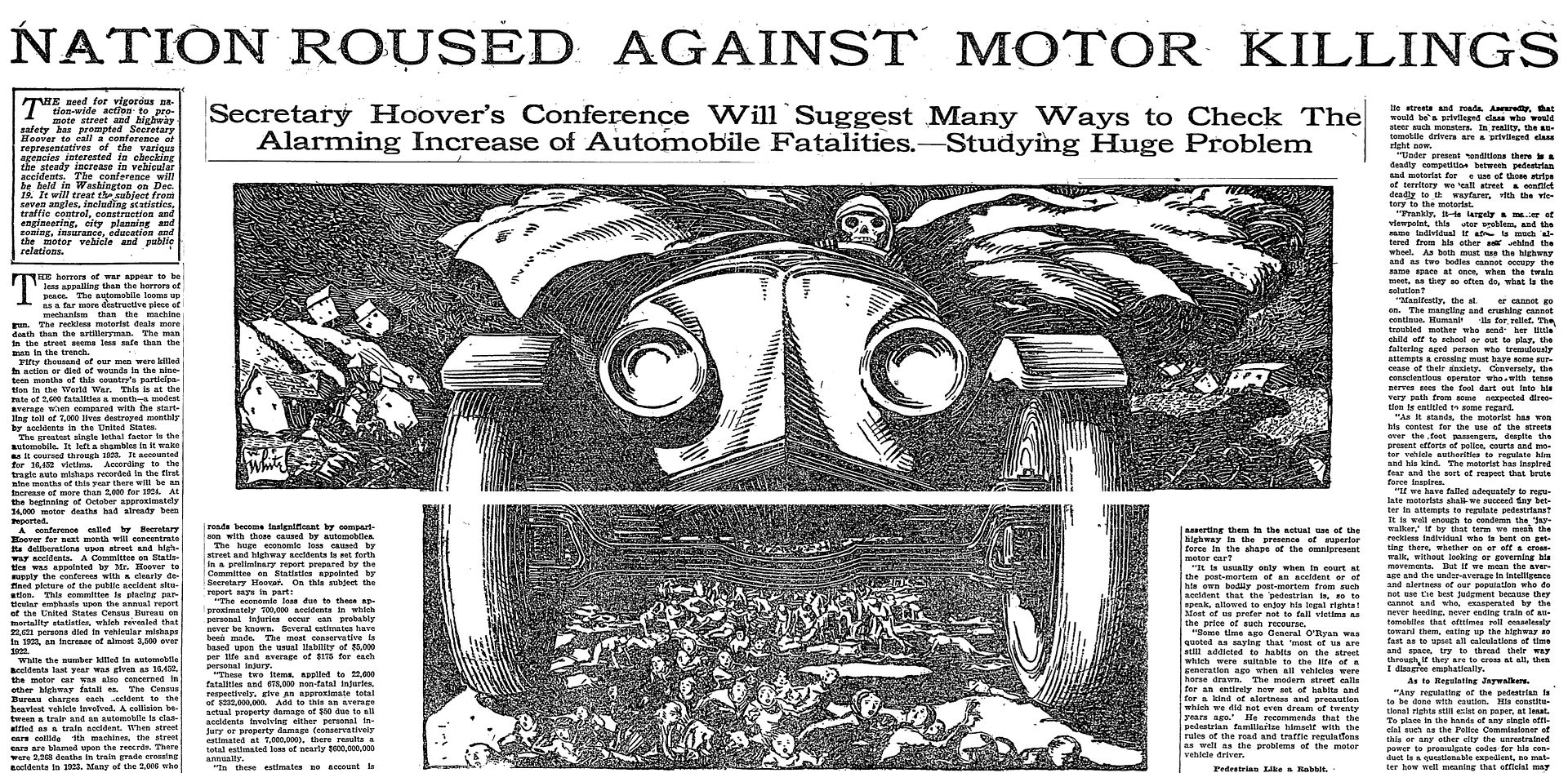
(Credit: New York Times, Nov 23, 1924)
Much of the public viewed the car as a death machine. One newspaper cartoon even compared the car to Moloch, the god to whom the Ammonites supposedly sacrificed their children.

Pedestrian deaths were considered public tragedies. Cities held parades and built monuments in memory of children who had been struck and killed by cars. Mothers of children killed in the streets were given a special white star to honor their loss.
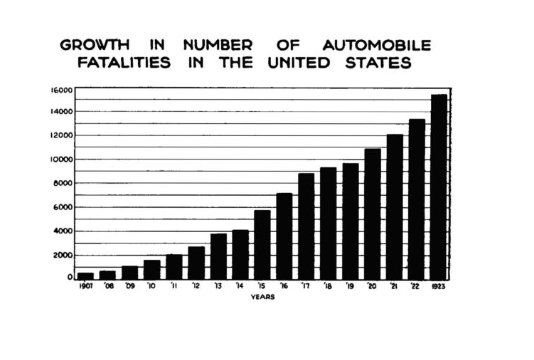
The horrors of peace appear to be appalling than the horrors of war. The automobile looms up as a far more destructive piece of mechanism than the machine gun. The reckless motorist deals more death the artilleryman. The man in streets seems less safe than the man in the trench. The greatest single lethal factor is the automobile. It left shambles in its wake as it coursed through 1923.
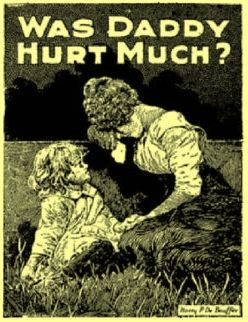
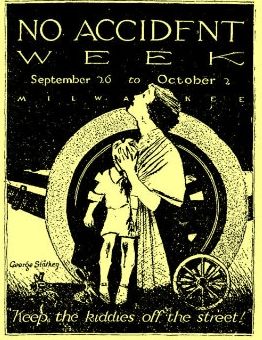
(From left: poster by Harry de Bauffer, reproduced in “Poster Wins Second Prize,” Milwaukee Journal, September 28, 1920; poster by George Starkey, reproduced in “Winning Safety Poster,” Milwaukee Journal, September 25, 1920.)
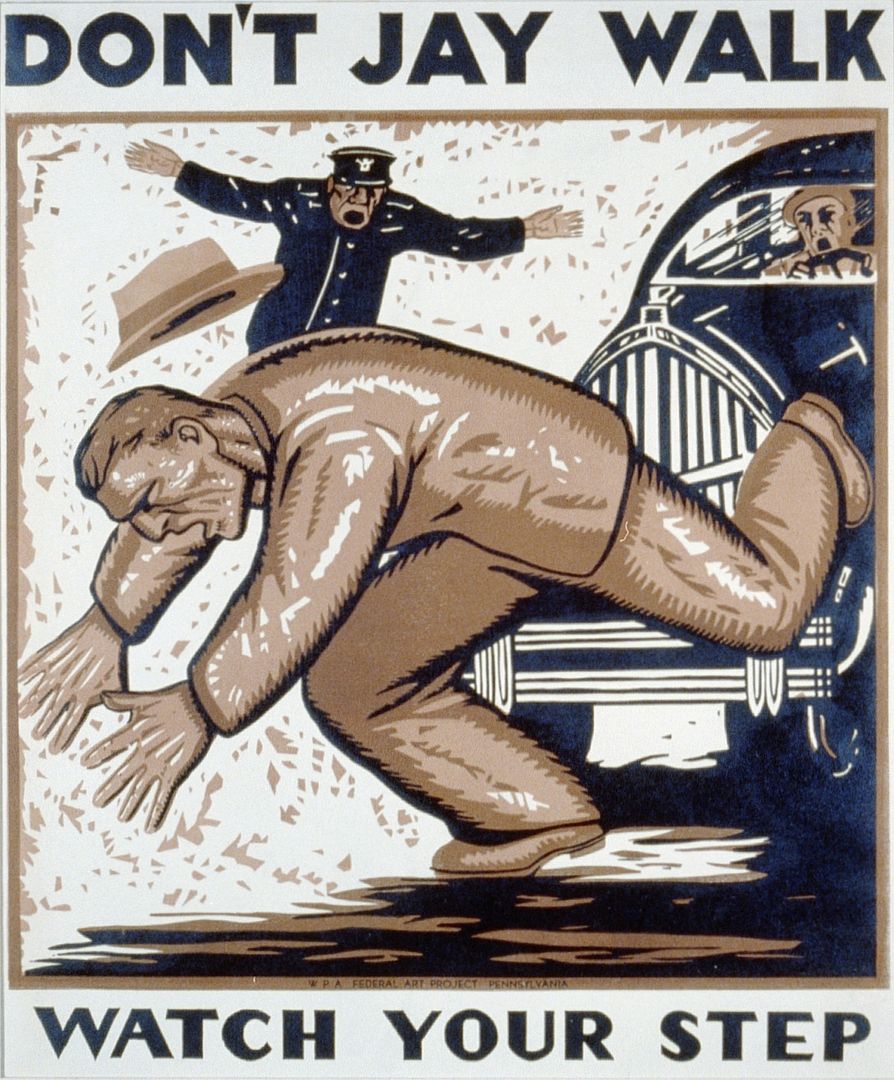
The Mikie Show #47, Kara
From Michael Carroll | Part of the The Mikie Show series | 28:02
It’s another episode of The Mikie Show! I know, we were all hoping I’d say that. Well, I did. Join us as we speak with Kara Hartzler, an attorney whose focus is immigration and refugee law. We talk about what’s right and wrong for all sides. And she’s a playwright as well, whose plays have been performed across the country.
We have other features, too: There’s a quiz! How often does one get to do that without even asking! Plus there’s news that only we seem to be able to find, and perhaps an unexpected guest. He or she remains in the shadows for now, I guess you’ll have to listen to see them.
And Mikie gets a phone call! How riveting, a phone call! Okay, that’s not that riveting but it could be a little welding-like!
What the heck am I talking about!
Try clicking the play arrow and help me find out!
- Playing
- The Mikie Show #47, Kara
- From
- Michael Carroll

It’s another episode of The Mikie Show! I know, we were all hoping I’d say that. Well, I did. Join us as we speak with Kara Hartzler, an attorney whose focus is immigration and refugee law. We talk about what’s right and wrong for all sides. And she’s a playwright as well, whose plays have been performed across the country. Click here for more info on that.
We have other features, too: There’s a quiz! How often does one get to do that without even asking! Plus there’s news that only we seem to be able to find, and perhaps an unexpected guest. He or she remains in the shadows for now, I guess you’ll have to listen to see them.
And Mikie gets a phone call! How riveting, a phone call! Okay, that’s not that riveting but it could be a little welding-like!
What the heck am I talking about!
Try clicking the play arrow and help me find out!
Bonjour Chanson Series 12, Episode 58
From Charles Spira | Part of the Bonjour Chanson Series 12 series | 28:07
Six Francophone artists born respectively in Senegal, Canada, the Réunion Island, France and Algeria interpret beautiful French language songs. We’ll tell you about them and their songs in English.
- Playing
- Bonjour Chanson Series 12, Episode 58
- From
- Charles Spira

Bat'ker, (France), Les Quais de Gare
Céline Dion, (Canada), Moi Quand Je Pleu
Ycare, (France), Une Vie
Amandine Bourgeois, (France), Envie D'un Manque de Problèmes
Patrick Bruel, (France), Viens Tout Contre Moi
Joyce Jonathan, (France), Au Bar
The Bittersweetness of God's Love (Full version)
From Eric Winick | Part of the The Bittersweetness of God's Love series | 08:37
Three views of the New York City non-profit meal delivery program, God's Love We Deliver.

From the files of Yarn AudioWorks.
These pieces were produced as entries in the Third Coast International Audio Festival's 2013 ShortDocs Competition.
A Good Hmong Daughter
From MPR News Stations | Part of the MPR News' Youth Series series | 06:10
What's propelling young, Hmong women to break with tradition and pursue their college dreams.
- Playing
- A Good Hmong Daughter
- From
- MPR News Stations

Traditional Hmong culture prepares daughters for marriage and motherhood. Kao Choua Vue
of St. Paul, Minnesota faced intense pressure from her parents to marry as a teenager and forego college. Now, she’s a junior year at the University of Minnesota and an aspiring filmmaker.
Vue reports on what's driving young Hmong women like her to pursue their college dreams.